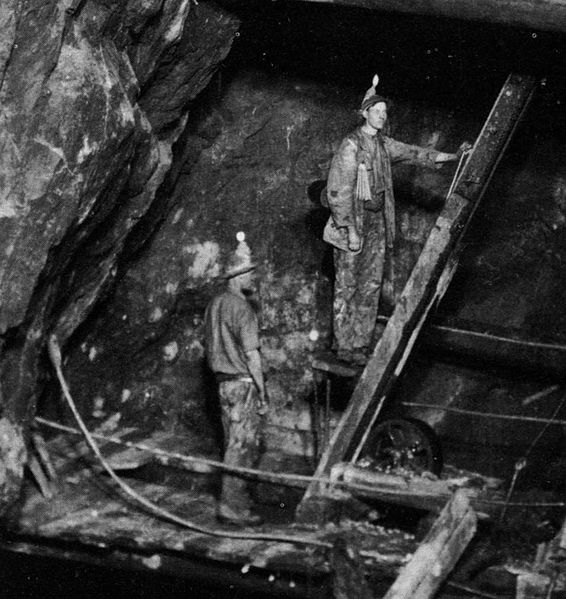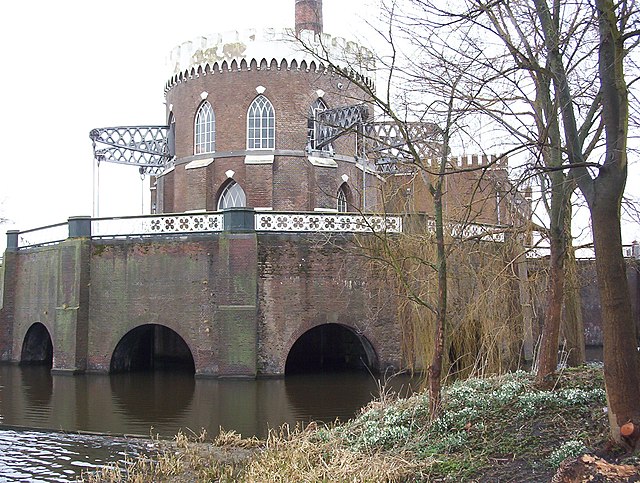A man engine is a mechanism of reciprocating ladders and stationary platforms installed in mines to assist the miners' journeys to and from the working levels. It was invented in Germany in the 19th century and was a prominent feature of tin and copper mines in Cornwall until the beginning of the twentieth century.
Two-rod example at the Upper Harz Mine Museum, Germany
Person on the 1837 man engine at the Samson Pit in Lower Saxony, Germany
Bottom of the man engine at the Dolcoath Mine, Cornwall
Twin-rod engine installed at the Kongens Gruve, Kongsberg, Norway
A beam engine is a type of steam engine where a pivoted overhead beam is used to apply the force from a vertical piston to a vertical connecting rod. This configuration, with the engine directly driving a pump, was first used by Thomas Newcomen around 1705 to remove water from mines in Cornwall. The efficiency of the engines was improved by engineers including James Watt, who added a separate condenser; Jonathan Hornblower and Arthur Woolf, who compounded the cylinders; and William McNaught, who devised a method of compounding an existing engine. Beam engines were first used to pump water out of mines or into canals but could be used to pump water to supplement the flow for a waterwheel powering a mill.
The cast-iron beam of the 1812 Boulton & Watt engine at Crofton Pumping Station – the oldest working, in situ example in the world
Back of Museum De Cruquius near Amsterdam, an old pumping station used to pump dry the Haarlemmermeer. It shows the beams of the pumping engine and the 9 meter drop in water level from the Spaarne river. The beam engine is the largest ever constructed, and was in use till 1933.
The remains of a water-powered beam engine at Wanlockhead
A small rotative beam engine, built in 1870 by Thomas Horn to a design by James Watt. The crank is visible at the front, the flywheel part-hidden by the engine. (Originally installed in a waterworks in Ashford, now operational and preserved at the Bredgar and Wormshill Light Railway.)








